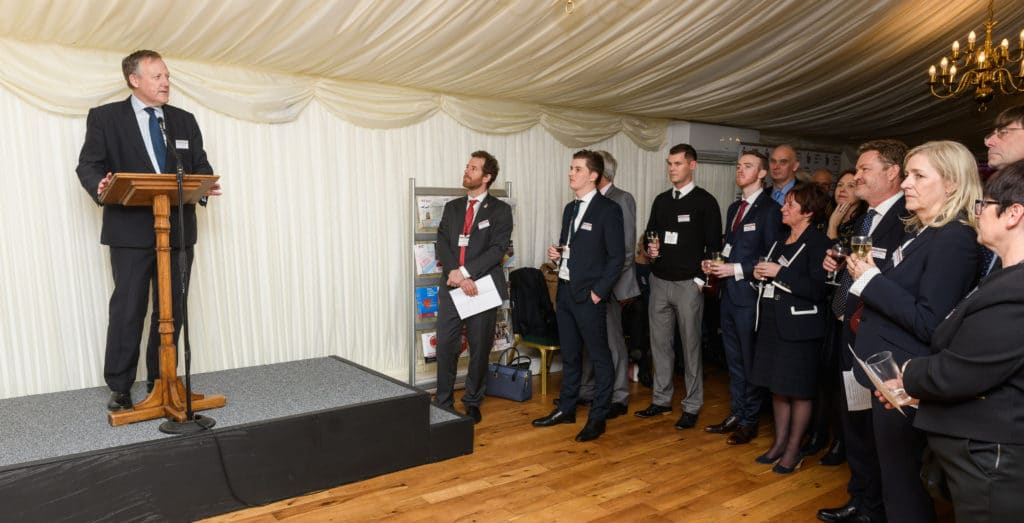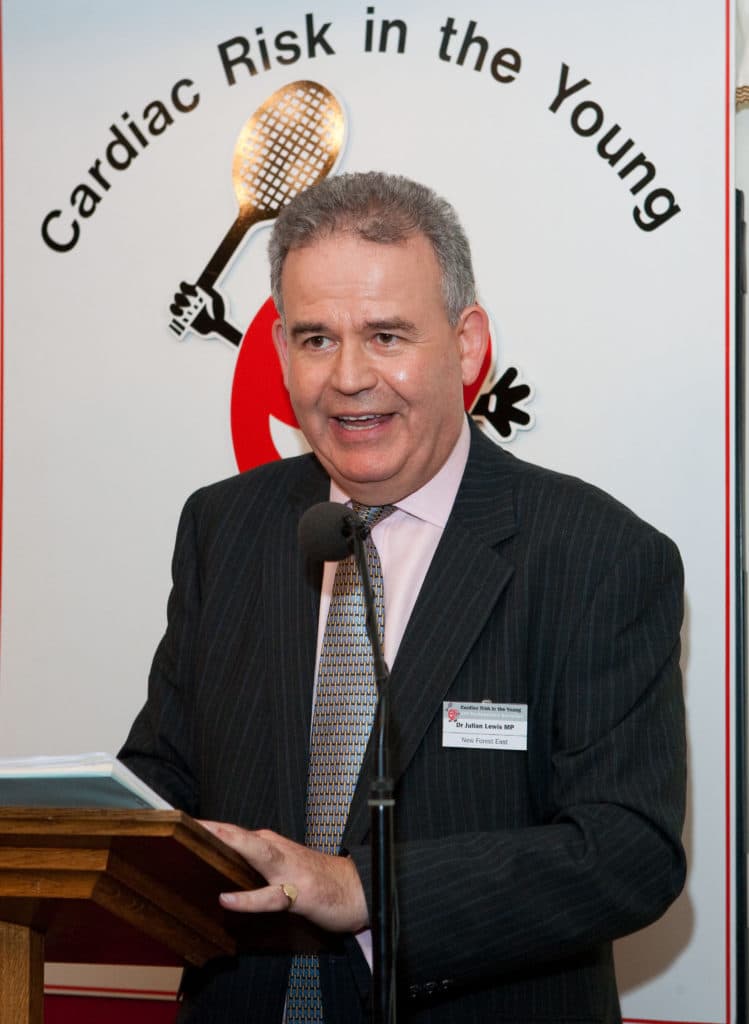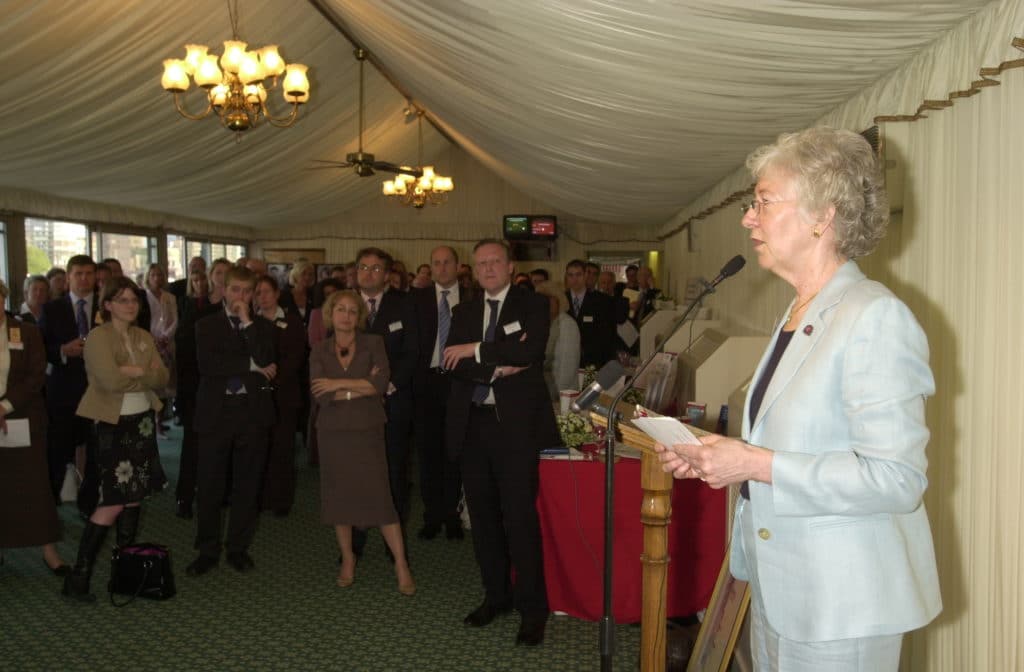
The annual Parliamentary Reception has become a popular and important feature of CRY’s calendar; a platform where projects have been unveiled, new resources introduced, and campaigns launched – as well as the opportunity for some influential and keynote speeches to be delivered.
But where did it all begin? And how did CRY start making an impact and becoming noticed by MPs, influencers, and decision-makers in the political arena?
The first time CRY was spoken of in Parliament was on 21st June 2001, just over five years after CRY was officially launched, when Dr Julian Lewis (MP for New Forest, East) raised the question of “cardiac risk in the young” (you can read what Dr Julian Lewis said here). This was after the tragic death of Sarah Woodhead, the wife of Adrian, one of his constituents. From this first record in Hansard of CRY’s campaign, our voice has grown louder each year.
In July 2002, Alison Cox inspired the establishment of an APPG (All Party Parliamentary Group) to represent CRY in the political arena, giving the charity and its supporters a “voice”.

CRY’s Honorary Patron, Sir Ian Botham attended this launch event, alongside Professor Sanjay Sharma and two of the founding members, Kevan Jones MP (above) and Julian Lewis MP, who are still, to this day, very involved with CRY and our ongoing campaigning agenda.
Speaking at the inaugural event held at the House of Commons, Sir Ian commented;
“At the end of the day these deaths are indiscriminate. They affect all sorts of people – amateur sportsmen, professional sportsmen, a guy playing on a pitch, a kid at a school sports day. It is something that must be addressed and has been swept under the carpet for too long.”
From this early group of supporting MPs, the APPG’s Treasurer, Dari Taylor (a forward-thinking Labour politician, representing South Stockton and with a personal connection to young sudden cardiac death) was nominated to push forward a Private Member’s Bill, highlighting the urgent need for legislation to ensure all first degree relatives were screened and assessed following a sudden cardiac death in a young person. She was also concerned by the fact that screening excluded young people exhibiting signs and symptoms which often went misdiagnosed or dismissed because the person was considered “too young to have heart problems”.
The wheels were soon in motion and – from amongst a number of other powerful ‘causes’ and campaigns – in December 2003, Dari Taylor’s Cardiac Risk in the Young (Screening) Private Member’s Bill was picked to go forward to the next level.
Around three months later, Dari Taylor presented the CRY Screening Bill to the House of Commons. But before it even reached its second reading it was ‘kicked out’ as a PMB (such was its impact) with the announcement by the then Public Health Secretary Melanie Johnson that an expert group on arrhythmia and sudden cardiac death would now be formed, which would include CRY in the consultation process for the new chapter to be added to the National Service Framework!
On March 12, 2004 (now acknowledged as a key date in CRY’s history) Melanie Johnson MP, said; “It is devastating for families when a young, apparently healthy person dies suddenly without warning. The majority of people with the underlying conditions do not have any symptoms for all or most of their life. However, the condition can lead to sudden and unexpected death, often in early adulthood.”
“I would therefore like to pay tribute to the efforts of organisations such as CRY, the British Cardiac Society and Dari Taylor MP who have worked tirelessly to raise awareness of the issue.”
Dari Taylor MP responded; “Almost 100 Members of Parliament from nearly all political parties offered their support. A number of these were MPs already involved with CRY and my parliamentary colleagues. However, a substantial majority were MPs who had agreed to support my Bill because they had been asked to do so by their constituents – invariably members of CRY.”
She went onto say; “We have today persuaded the Department of Health to launch a new strategy to tackle sudden cardiac death in the young, the culmination of a three-month campaign… Today’s moves should start a train of events leading to new guidelines in every clinic and hospital. It is a real triumph for Teesside and the North East, after the hard work of local families and MPs. I have been inspired and helped by friends who suffered a loss, the Morlands from Houghton and the Bowens from Redcar.
“We know from research and experience that we can prevent these deaths – but now we need to put that knowledge to work. Far too many cases are slipping through the net undiagnosed, misdiagnosed, or diagnosed but not treated.”
“I have seen the tragedy of sudden death first-hand, when the 22-year old son of a good friend collapsed suddenly and died. How do families cope with this trauma? Today’s announcement will help prevent such deaths and I am delighted that the Government has taken this terrible condition seriously.”
That same week, CRY held a Parliamentary Reception. The room was packed-out! The volume of MPs, CRY families, stakeholders and medics in attendance was unprecedented and in the words of Alison Cox the sense of anticipation at what was to come was “palpable”.

There was little doubt that this was a major turning point in CRY’s journey. It saw the charity as a true catalyst for change and instrumental in pulling families, politicians, and stakeholders together as one voice, capable of making a huge impact.
So much so, that later that year, 20 CRY delegates were invited to attend the Department of Health’s consultation meeting for the new NSF chapter.
CRY went on to have four representatives on the sub-groups during the ongoing consultation period and, most crucially, was invited onto the New Implementation Board. This ensured that that in the vital discussion period when funds were allocated, and targets set – young sudden cardiac death had a significant profile.
The new chapter promised to give; “special attention to sudden unexplained cardiac death. Where there is little or no warning of death in a young person, each family story is moving and each story is tragic….With this document, we aim to prevent some of these tragedies and ensure that there is appropriate support for the families of people who die unexpectedly, many of whom are young.
It would also; “provide a quality framework against which local services can secure improvements. It will enable the NHS to deliver the highest quality of care to people whose lives are affected by arrhythmias”.
Eventually, in March 2005 (almost 10 years after CRY was founded), a new chapter (“Chapter 8”) was published (announced by the Secretary of State for Health John Reid at the Coronary Heart Disease Collaborative Conference in Birmingham) as part of the National Service Framework for Coronary Heart Disease.
Chapter 8; Arrhythmias and Sudden Death, set out three quality requirements and 20 markers of good practice for the prevention and treatment of patients with cardiac arrhythmias and people who may be at risk of sudden cardiac death.
Up until this point, the first seven chapters of the NSF had only focused on disease in the arteries. The word ‘arrhythmia’ was only mentioned once in the NSF and there were no guidelines relating to ‘electrics’ of the heart. The publication of this new chapter completed the set by addressing diseases of the heart’s electrical systems and providing new models of care to support further improvement in services for arrhythmias and better prevention of sudden cardiac death.
CRY Patron Professor Bill McKenna said at the time: “The consultation process brought together all the elements involved including coroners, geneticists, expert clinics, and support groups. It has been very valuable and should result in a dramatic improvement in the prevention of tragedies, and the care and management of those affected. All involved learned; preconceptions were broken down; important contributions made. It has realistic and positive potential and, if recommendations were implemented, within 3 to 5 years we will see significant results….”
But, rest assured, Alison Cox didn’t let it rest there and resolved to maintain pressure on all those involved!
A year later, in March 2006, The Guardian newspaper ran a story on a survey conducted by CRY, challenging the rate of progress and reminding them that these deaths were becoming too regular not to prioritise. The Department of Health responded that it had been given 5 years to complete the task to which Alison told the health correspondent, Polly Curtis, “Yes, we’re impatient. But there are at least 400 more [young] people dead since last year; that will be 2,000 in five years-time. Alarm bells should be ringing”
CRY never sat back or gave up its campaign surrounding CRY’s [Screening] Private Members Bill. The blueprint for a referral pathway for families after a young sudden death (to ensure they were immediately referred to a heart rhythm specialist) had been set.
It was established in NHS practice by 2008. CRY was now officially a respected voice on behalf of bereaved families and one which wouldn’t take no for an answer…





